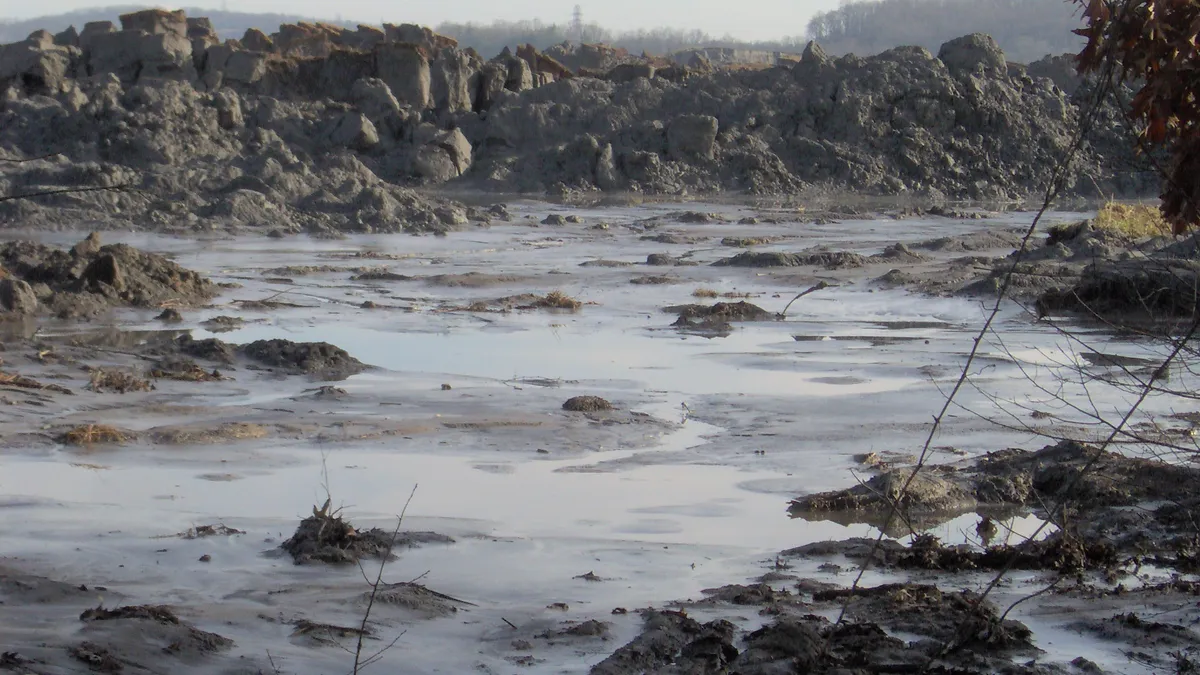Dive Brief:
-
Record-breaking rains from Hurricane Florence caused the release of more than 2,000 cubic yards of coal ash from a Duke Energy power plant in North Carolina, the utility announced Sunday, some of which may have reached nearby waterways.
-
Erosion from rains caused the failure of a slope storing ash in a pond at the Sutton power plant in Wilmington, N.C., the utility said. Some of the ash may have reached Sutton Lake, the cooling pond for the plant that is used for recreation by residents in the area.
-
More than 470,000 people remain without power after the storm in North Carolina, 17,000 in South Carolina, and 14,700 in Virginia, according to PowerOutage.US. Duke said it restored power to more than 1 million customers over the weekend.
Dive Insight:
The amount of coal ash released from the Sutton plant is relatively small compared to major spills, but it underscores the inherent risks of storing the waste product in close proximity to waterways and local communities.
Coal ash, created by burning coal for electricity generation, contains heavy metals like mercury and lead known to be harmful to humans. Duke said enough ash was released to fill two-thirds of an Olympic-sized swimming pool, but most of it was caught in a ditch surrounding the storage facility.
"Coal ash is non-hazardous, and the company does not believe this incident poses a risk to public health or the environment," the company said.
As the weather clears, state officials will inspect the facility to better assess the spill and how much ash may have entered Sutton Lake or the nearby Cape Fear River, the North Carolina Department of Environmental Quality (DEQ) said in a statement.
"Once the damage is assessed, DEQ will determine the best path forward and hold the utility accountable for implementing the solution that ensures the protection of public health and the environment," the agency said.
Duke has struggled publicly with coal ash management since 2014, when one of its facilities spilled tens of thousands of tons of ash into the Dan River in North Carolina. The utility pled guilty to multiple criminal violations of the Clean Water Act in 2015, and in 2016 announced it would excavate its highest-risk ash ponds and move the contents to lined landfills.
The Sutton plant, a gas generator converted from coal in 2017, is one of those facilities. Duke plans to close the two ash ponds at the plant in 2019, transferring the contents to a nearby dry storage landfill, and the utility said excavation had already begun at the facility when the storm hit.
Environmentalists say incidents like the Sutton plant spill show why Duke should go beyond storing coal ash at its plants and instead move it to lined facilities away from waterways.
The incident "illustrates the dangers of Duke Energy’s practice of disposing of coal ash near waterways throughout North and South Carolina," Frank Holleman, senior attorney at the Southern Environmental Law Center, said in a Sunday statement. "After this storm, we hope that Duke Energy will commit itself to removing its ash from all its unlined waterfront pits and, if it refuses, that the state of North Carolina will require it to remove the ash from these unlined pits."
Climate scientists say the intensity and frequency of storms like Florence are likely to increase as global temperatures rise. The storm dropped more than 40 inches of rain in some areas of North Carolina this weekend, even as it weakened to a Category 1 hurricane before making landfall. More than a dozen people have died in its path.
Duke said it had more than 20,000 workers on hand to respond to the hurricane and shut down its Brunswick nuclear plant on the North Carolina coast ahead of the storm. Florence has now been downgraded to a tropical depression, but the utility warned more outages are likely as its remnants move through the Carolinas this week.
Correction: A previous version of this post located the site of the Dan River spill in West Virginia.














